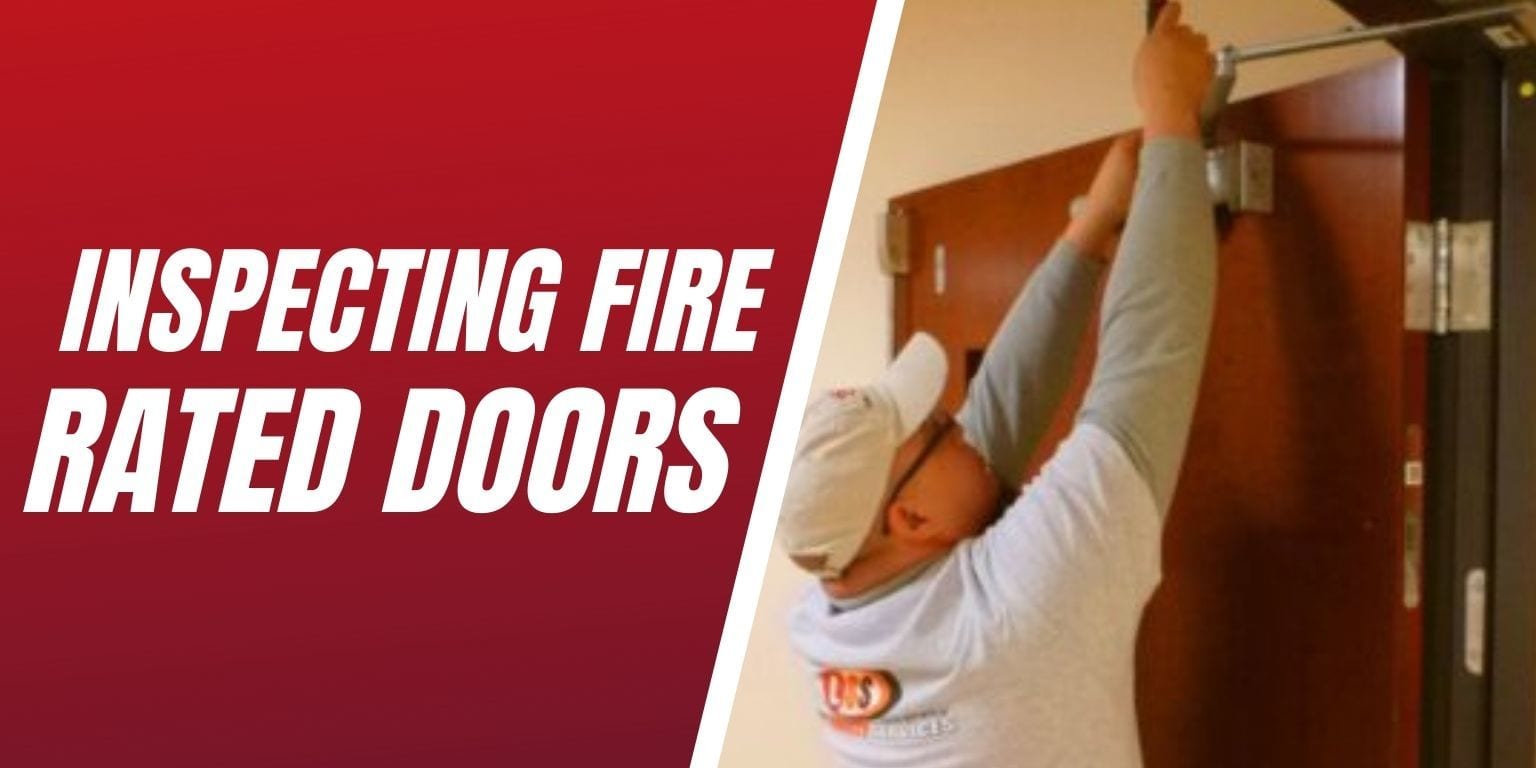
Compartmentalizing your facility into section to help prevent the spread of fire and smoke will help ensure you and your building occupant’s will be safe and prepared during a fire. One of the best ways to compartmentalize a facility, while also providing a safe evacuation route for your building occupants is the use of fire doors. Inspecting fire rated doors are a key component to maintaining your building’s over all fire and life safety system. They have been specifically designed to help prevent the spread of fire and smoke throughout a building, while providing a safe egress for those trying to evacuate. However, in order for a fire door to do its job, it must be properly maintained to be in-compliance with the codes and standards. Fire doors are complicated devices, with many different parts working together to help the door function properly. Unfortunately, this allows for many different deficiencies to occur over time, so it is important to know what to what you are inspecting.
Inspecting Fire Rated Doors 13 Point Checklist
According to the National Fire Protection Association (NFPA) 80, Section 5.2.3.5.1 “Fire door assemblies shall be visually inspected from both sides to access the overall condition of the door”.
Swinging Doors with Builders Hardware or Fire Door Hardware
1. Labels are clearly visible and legible.
2. No open holes or breaks exist in surfaces of either the door or frame.
3. Glazing, vision light frames, and glazing beads are intact and securely fastened in place, if so equipped.
4. The door, frame, hinges, hardware and noncombustible threshold are secured, aligned, and in working order with no visible signs of damage.
5. No parts are missing or broken.
6. Door clearances do not exceed clearances listed in 4.8.4 and 6.3.1.7.
7. The self-closing device is operational; that is, the active door completely closes when operated from the full open position.
8. If a coordinator is installed, the inactive leaf closes before the active leaf.
9. Latching hardware operates and secures the door when it is in the closed position.
10. Auxiliary hardware items, which interfere or prohibit operation, are not installed on the door and frame.
11. No field modifications to the door assembly have been performed that void the label.
12. Meeting edge protection, gasketing and edge seals, where required, are inspected to verify their presence and integrity.
13. Signage affixed to a door meets the requirements listed in 4.1.4.
Making sure that your facility’s fire doors are tested and inspected annually and providing a written record for your AHJ may seem like a tedious task. But a properly functioning fire door is critical to the integrity of the building and the safety of its occupants. Fire doors are designed to prevent the passage of fire and smoke, while providing a safe evacuation through the building during a fire. There are many parts that go into making a fire door work, which make inspections complex and require a qualified inspector in the field to perform the annual inspection as accurately as NFPA requires. Not to mention, it can be hard to keep up with the latest fire door requirements, especially if you have many you are trying to follow.
Whether you are a facility manager in the educational arena, commercial or hospitality, ensuring that your building’s occupants are safe in the event of a fire is of the up most importance. So don’t wait for a fire to happen, ensure your facility’s fire doors work by having them inspected and repaired.
For more information about inspecting fire rated doors, Contact Us Here, or call 888-675-4519 to see how LSS can help keep your facility’s fire rated doors incompliance.

